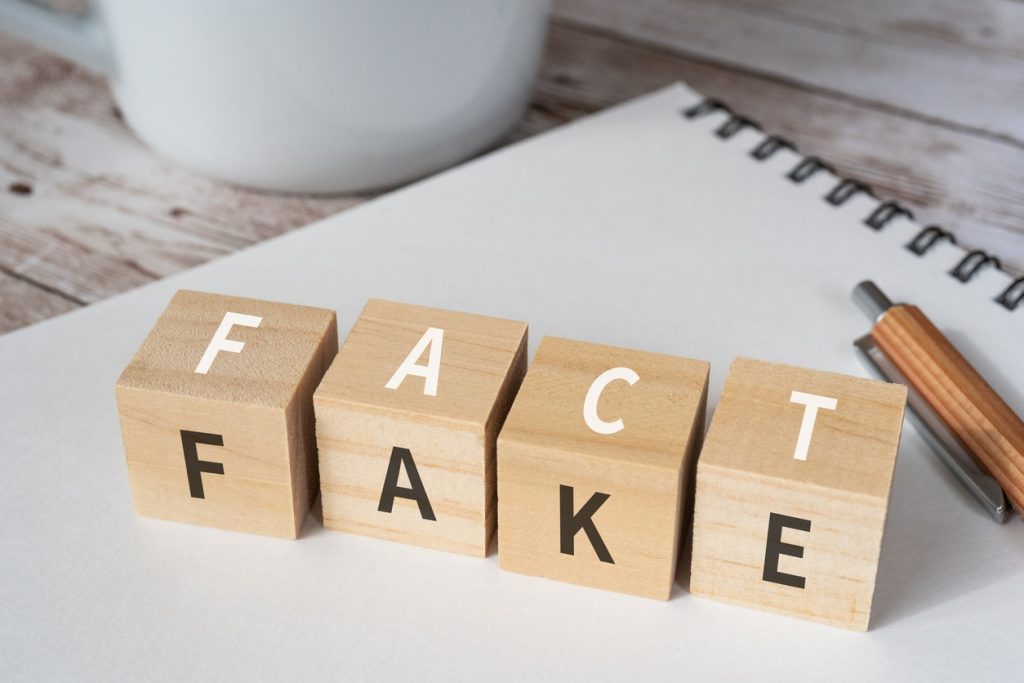Fake Scientific Research: The Invisible Threat Undermining Knowledge – Glass Almanac

Wooden blocks with "FACT" and "FAKE" text of concept, a pen, a notebook, and a cup.
In recent years, an insidious trend has been undermining the very foundations of science: the spread of fraudulent research. These fake studies, mass-produced by covert networks known as “paper mills,” are flooding scientific journals, distorting facts, and hijacking the quest for knowledge for profit. Behind this facade are pressured researchers, complacent publishers, and millions of deceived readers. The issue is extensive, and the consequences are severe. These publications are not mere mistakes: they guide health policies, influence medical treatments, and divert funds from legitimate research. More alarmingly, they erode public trust in science at a time when it is more necessary than ever.One might imagine science as a strict world where each discovery undergoes rigorous scrutiny by experts before validation. In theory, this is true. In practice, the drive for publications and the “publish or perish” pressure lead some researchers to cheat and others to purchase ready-made studies.This is where paper mills come into play. These clandestine operations produce entirely fabricated articles or slightly modify old work to make it appear original. They then sell these articles to researchers desperate for quick publications, which are submitted to sometimes lax journals. For a few thousand dollars, a scientist can have their name on a bogus study, published in a journal that lends them the credibility needed to advance their career.Some paper mills go even further by creating fake peer reviewers: they submit articles with suggested evaluators who automatically approve the publications without real oversight. Others alter images, falsify results, or manipulate data tables. It’s a craft… dedicated to deception.Nearly 120,000 scientific journal articles and conference proceedings are published each week worldwide (more than six million a year). However, publishers estimate that about 2% of the submitted articles in most journals are likely fraudulent.This publication trafficking might seem almost humorous if it didn’t have dire repercussions. When a fake study is published, it doesn’t stand alone: it is read, shared, and cited by other researchers. It becomes part of the scientific body of knowledge, potentially influencing years of research.In the medical field, the impact is particularly alarming. Some fraudulent studies have mistakenly directed cancer research and misled scientists who relied in good faith on incorrect data. During the COVID-19 pandemic, low-quality or clearly tampered studies fueled controversy over certain treatments and added to public debate confusion.Then there’s the matter of trust. Science is based on an implicit contract of reliability. When a scandal breaks, when a study is retracted after being cited hundreds of times, the credibility of the entire system is shaken. In a world where conspiracy theories thrive on the slightest doubt, each integrity breach in science is a gap through which misinformation can surge.In the face of this threat, countermeasures are being organized. Digital tools have been developed to track suspicious articles. Algorithms like Problematic Paper Screener scan millions of studies to identify dubious patterns, while platforms like Retraction Watch track retracted articles to prevent them from continuing to be cited.However, the battle is complex. Some journals delay retracting fraudulent articles for fear of tarnishing their reputation or simply due to a lack of resources to conduct thorough investigations. Others, more cynically, turn a blind eye to certain frauds as long as the business thrives.To curb this scourge, a fundamental rethink of the scientific research publication model is necessary. It will be crucial to better regulate peer review by compensating reviewers to ensure rigorous work, to promote transparency by making research data accessible to allow other scientists to verify results, and to change how researchers are evaluated—focusing not just on the quantity of publications but on the real impact of their work.Science is a valuable tool; it enlightens our world, helps us unravel nature’s mysteries, and pushes the boundaries of the possible. However, to maintain its power, it must remain trustworthy. Protecting the integrity of knowledge means defending science against those who would turn it into mere commerce of illusion.This article is a condensed version of a six-month investigation by journalist Frédéric Joelving, in collaboration with French computer scientists Cyril Labbé and Guillaume Cabanac. For more information, read the full version.
Comment Save my name, email, and website in this browser for the next time I comment.
Discover the future through Glass Almanac, your premier source for all things tech and entertainment. From the latest in augmented reality to cutting-edge scientific discoveries and trending TV shows, we bring you insightful, up-to-the-minute coverage. Dive into our world where technology meets daily life and stay ahead of the curve with Glass Almanac.Glass Almanac100 Tech WaySan Francisco, CA 94107United StatesPhone: +1 415-555-0100Email: contact@glassalmanac.comStay connected with us for the latest updates and insights.
Source: https://glassalmanac.com/fake-scientific-research-the-invisible-threat-undermining-knowledge/



